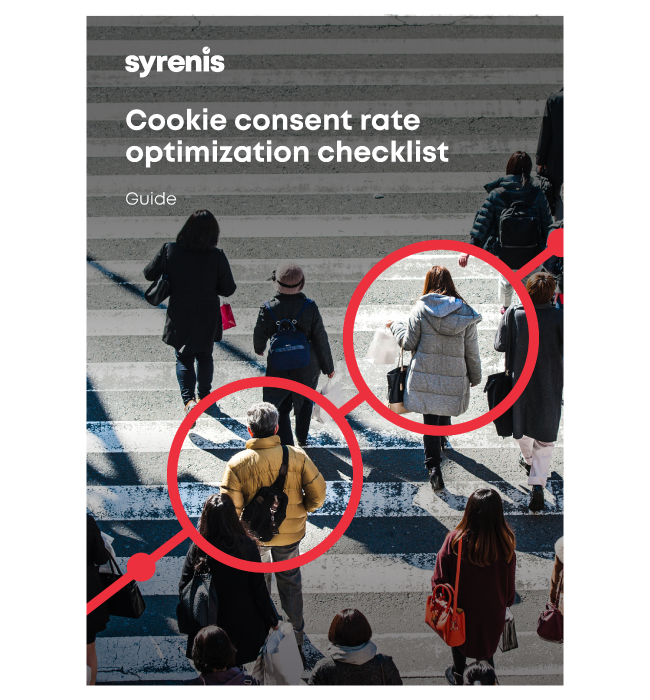Cookie compliance in 2025 has become a critical part of data privacy strategies for enterprise organizations. With global regulations tightening and third-party cookies being phased out, businesses must rethink how they collect, manage, and honor user consent. For leaders in marketing, IT, and compliance, understanding these changes is essential to avoid legal risk and maintain customer trust.
Jump to:
- Why cookie compliance matters now
- EU vs US cookie laws – what businesses need to know
- The end of third-party cookies and what it means for compliance
- Common compliance mistakes to avoid
- How to achieve cookie compliance in 2025
- Why Cassie is the right solution for enterprise compliance
Why cookie compliance matters now
Cookies remain a cornerstone of online personalization and analytics, but their use is under intense scrutiny. Regulators across the EU and the US have made it clear, consent must be:
- Freely given
- Specific
- Informed
- Unambiguous
Dark patterns, pre-ticked boxes, and vague language are no longer tolerated. Non-compliance can lead to significant fines; up to €20 million or 4% of global turnover under GDPR, and up to $7,500 per violation under California’s CPRA.
Beyond legal risk, cookie compliance is a trust signal, where users expect transparency and control over their data. A poorly designed consent banner can erode confidence and damage brand reputation.
EU vs US cookie laws – what businesses need to know
European Union: strict opt-in and enforcement
In the EU, cookie compliance is governed by the GDPR and the ePrivacy Directive. The rule is clear: any cookie that is not strictly necessary for the basic functioning of a website requires prior, explicit consent, which includes analytics, marketing, and personalization cookies.
Key requirements in 2025 include:
- Granular controls: Users must be able to accept or reject specific categories of cookies
- No nudging: Interfaces that make “Accept All” more prominent than “Reject All” are considered manipulative
- Easy withdrawal: Consent must be as easy to revoke as it is to give
- Audit trails: Businesses must maintain records of consent for compliance verification
Regulators are actively enforcing these rules, particularly across the EU, signaling a zero-tolerance approach to non-compliance.
United States: a patchwork of state laws
Unlike the EU, the US lacks a federal cookie law. Instead, businesses face a growing patchwork of state-level regulations. California’s CPRA (an extension of CCPA) is the most influential, requiring:
- Support for Global Privacy Control (GPC) signals
- A visible “Do Not Sell or Share My Personal Information” link
- Clear opt-out mechanisms for cross-context behavioral advertising
In 2025, eight additional states, including Texas, Florida, and Oregon, introduced their own privacy laws. While these laws share common principles like opt-out rights, their interpretations vary. A static, one-size-fits-all banner is no longer viable. Businesses need dynamic, location-aware consent solutions to stay compliant across jurisdictions.
The end of third-party cookies and what it means for compliance
The technical landscape is shifting alongside legal requirements. In 2025, Google Chrome joined Safari and Firefox in blocking third-party cookies by default, marking the end of an era for cross-site tracking and behavioral advertising.
For enterprises, this means:
- First-party data becomes critical: Collecting data directly from users with clear consent is now the foundation of personalization
- Contextual advertising gains traction: Targeting based on page content rather than user profiles is making a comeback
- Consent-driven tracking is non-negotiable: Tools like Google Consent Mode v2 and IAB TCF v2.2 are essential for maintaining ad performance while respecting privacy.
Common compliance mistakes to avoid
Despite clear regulations, many businesses still fall short. Common pitfalls include:
- Loading non-essential cookies before consent
- Using vague or passive language like “By continuing to browse, you accept cookies.”
- Hiding rejection options behind multiple clicks
- Failing to adapt banners for different jurisdictions
How to achieve cookie compliance in 2025
For enterprise organizations, cookie compliance requires a strategic approach:
- Implement a Consent Management Platform (CMP): A CMP like Cassie enables real-time cookie scanning, location-based consent logic, and integration with tools such as Google Tag Manager. It also ensures compliance with frameworks like Google Consent Mode v2 and IAB TCF v2.2
- Design user-friendly consent banners: Make “Accept All” and “Reject All” equally prominent. Provide granular controls for different cookie categories and ensure consent can be withdrawn easily
- Maintain auditable records: Document every consent interaction to demonstrate compliance during audits
- Stay updated on regional laws: With regulations evolving rapidly, businesses must monitor changes in both the EU and US. Dynamic consent solutions that adapt to user location are essential
- Plan for a cookieless future: Shift toward first-party data strategies and explore privacy-preserving technologies like server-side tagging and contextual targeting.
Why Cassie is the right solution for enterprise compliance
Cassie by Syrenis is designed for organizations that need more than a basic cookie banner. It offers:
- Granular consent management across multiple jurisdictions
- Integration with enterprise systems for seamless data governance
- Real-time compliance monitoring to keep pace with evolving regulations
By choosing Cassie, businesses can turn compliance into a competitive advantage, building trust while reducing legal and operational risk.


